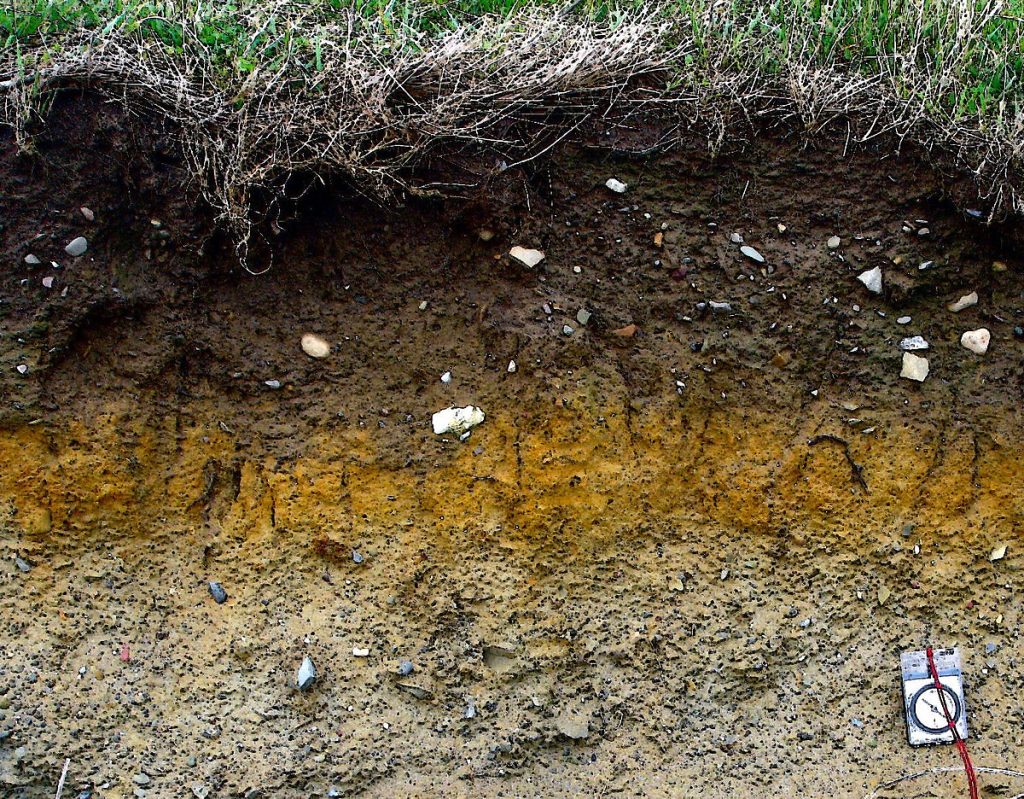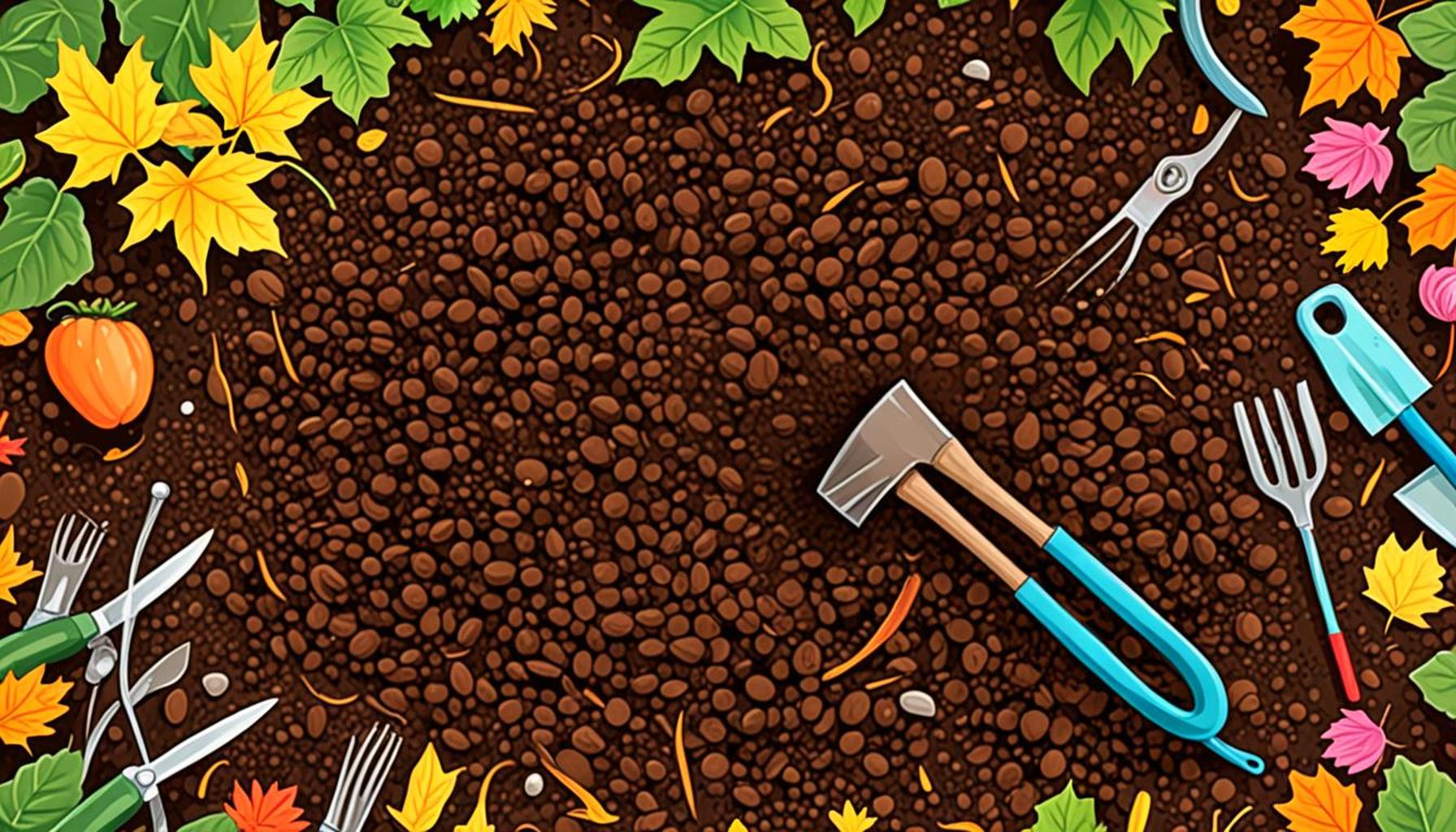The Role of Organic Matter in Soil Health: How to Incorporate It

Significance of Organic Matter in Soil
Soil health is a crucial aspect of sustainable land use and ecosystem balance, influencing everything from agricultural productivity to environmental quality. At the core of this vital resource is organic matter, a dynamic consortium of decomposed plant and animal materials that enriches the soil. It not only serves as a reservoir of essential nutrients but also plays a critical role in moderating soil structure and aeration.
So, what makes organic matter indispensable? Let’s delve into its multifaceted benefits:
- Nutrient supply: Organic matter acts as a slow-release fertilizer. When it decomposes, it releases nitrogen, phosphorus, and potassium—key nutrients that are vital for plant growth. For instance, a soil rich in organic matter can enhance crop yields significantly, thereby supporting food security.
- Water retention: Soils that are high in organic content have a porous structure that allows them to hold water more effectively. This property is particularly beneficial in areas prone to drought, as it can lead to reduced irrigation needs. A study conducted in California found that increases in soil organic matter could improve moisture retention by up to 20%, significantly benefiting local agriculture.
- Biodiversity support: Organic matter provides a habitat for countless beneficial microorganisms, such as fungi and bacteria. These organisms not only break down organic matter, further enriching the soil but also contribute to the nutrient cycle, aiding in plant growth. Healthy microbial diversity helps combat soil erosion and enhances resilience to pest pressures.
Incorporating organic matter into soil is more than a beneficial practice; it is increasingly seen as a cornerstone for sustainable agriculture. Across the United States, farmers and gardeners are discovering innovative methods to enhance their soils. From composting kitchen scraps and yard waste to planting cover crops that are turned under to enrich the soil, there are myriad techniques to boost soil organic matter.
For example, in the Midwest, many farmers use cover crops such as clover or rye during the off-season. These cover crops prevent soil erosion, suppress weeds, and, when tilled back into the ground, significantly increase the organic content of the soil. Additionally, urban gardeners often utilize compost bins to recycle organic waste, closing the loop in their local ecosystem.

A deeper understanding of the role of organic matter, along with recognizing effective incorporation techniques, can lead to transformative improvements in soil health. This not only supports the immediate agricultural environment but also contributes to broader environmental health. As we explore this fascinating topic further, numerous strategies will emerge for enhancing soil vitality through the magic of organic matter.
Incorporating Organic Matter: Techniques for Enhancing Soil Health
Understanding how to effectively incorporate organic matter into soils can lead to profound improvements in soil health, promoting sustainable agricultural practices and enhancing biodiversity. Whether you’re a suburban gardener or a commercial farmer, there are numerous strategies you can implement to increase organic matter content in your soil. Below are some of the most effective methods:
- Composting: Composting involves the breakdown of organic materials like vegetable scraps, grass clippings, and leaves into nutrient-rich humus. Available as backyard bins or commercial systems, composting can significantly boost organic matter levels in your garden or farm. A study published by the USDA suggests that regular application of compost can improve soil structure and fertility over time.
- Cover Cropping: The practice of planting cover crops in the off-season helps protect the soil from erosion and weeds while adding organic matter during decomposition. Varieties such as legumes, including clover and vetch, are particularly beneficial as they not only contribute organic matter but also fix nitrogen in the soil, enhancing its fertility.
- Mulching: Applying a layer of organic mulch, such as straw, wood chips, or shredded leaves, can improve moisture retention and gradually decompose to increase soil organic content. Home gardeners in the Pacific Northwest, for example, often use mulched leaves from oak trees, which fosters microbial activity and soil health in cooler, damp climates.
- Green Manures: Similar to cover crops, green manures are crops specifically grown to be tilled back into the soil to enrich it. Common examples include buckwheat and legumes, which provide a substantial increase in organic matter when incorporated into the soil at maturity.
- Animal Manure: Well-managed animal manure from livestock, such as cows, horses, or chickens, serves as an excellent source of organic matter. It not only enriches the soil but also adds vital nutrients. Proper composting of manure is crucial, however, to minimize the risk of pathogens and ensure a safe application.
As we delve deeper into these techniques, it’s crucial to recognize the importance of soil testing. Before implementing any strategy, it is advisable to analyze your soil composition to understand its existing organic matter content, pH levels, and nutrient availability. Testing can guide decisions on the types and quantities of organic matter to incorporate. Additionally, maintaining a balance between the different sources of organic matter is crucial to prevent nutrient imbalances that could harm plant growth.
Incorporating organic matter is not solely about adding material; it’s about fostering a healthy ecosystem within the soil. Each method contributes to a living, thriving soil network that promotes sustainable agricultural practices and advances long-term soil health. In the vibrant tapestry of farming and gardening across the United States, these practices are essential in creating a resilient landscape that can withstand the challenges of climate variability and soil degradation.
| Advantage | Description |
|---|---|
| Improved Soil Structure | Organic matter promotes better aggregation of soil particles, leading to enhanced aeration and drainage. |
| Increased Nutrient Availability | Decomposed organic matter releases essential nutrients that plants can readily absorb, improving overall soil fertility. |
| Enhanced Water Retention | With enriched organic content, soil can better retain moisture, aiding in drought resistance. |
| Climate Regulation | Organic matter plays a key role in sequestering carbon, thus mitigating climate change impacts. |
Incorporating organic matter into soil health practices facilitates a multitude of benefits essential for sustainable agriculture. Each component reveals how enriching soil with organic matter not only fortifies plant growth but also contributes significantly to environmental sustainability. The synergy of these factors underscores the critical need for ongoing exploration in organic matter integration methods. Ensuring pathways like composting, cover cropping, and crop rotation become staples can amplify the transformative potential of soil. Understanding these advantages can lead to deeper insights and innovative practices in farming systems, positioning them for resilience in the face of climate challenges.
Maximizing Organic Matter Benefits: Advanced Practices
Incorporating organic matter into soil involves more than just direct applications. There are advanced practices that can further enhance the benefits gained from organic materials, creating an intricate balance that boosts overall soil vitality. Understanding these strategies can empower both hobbyists and professionals alike to adopt sustainable practices that lead to healthier soils. Here are some key considerations and advanced techniques:
- Crop Rotation and Diversification: Engaging in crop rotation is crucial for adding organic matter while also mitigating soil depletion. Different crops contribute varied organic materials and nutrients. For instance, alternating deep-rooted crops with shallow-rooted ones helps to aerate the soil and improve its structure, thereby fostering higher organic matter accumulation. This technique not only improves soil health but also disrupts pest cycles and enhances biodiversity within the soil ecosystem.
- No-Till Farming: The no-till farming method minimizes soil disturbance, preserving the existing soil structure and organic matter. This technique encourages microbial life and retains moisture, which can be particularly advantageous in arid regions. Studies reveal that farmers practicing no-till can significantly enhance their soil’s organic carbon reserves while reducing erosion. For example, in the Midwest, many corn and soybean growers have reported yields that rival those who practice conventional tilling, without compromising soil health.
- Biochar Addition: Using biochar, a carbon-rich material produced from organic waste, can be a groundbreaking way to enhance soil organic matter. When incorporated into soil, biochar not only increases water retention and nutrient-holding capacity but also creates habitats for beneficial soil microorganisms. Research from institutions like the University of California highlights the potential of biochar to sequester carbon, making it an attractive option for farmers aiming to improve soil health and counteract climate change.
- Integrated Pest Management (IPM): Implementing IPM practices can indirectly enhance soil organic matter by minimizing chemical inputs that can disrupt soil microbiomes. Fostering a biodiverse ecosystem through reduced pesticide use encourages beneficial insects and microorganisms, which contribute to organic matter breakdown and soil health. Moreover, this approach can lead to more resilient farming systems, reducing the need for synthetic fertilizers that can deplete organic matter over time.
- Soil Amendments and Supplements: Utilizing natural soil amendments, such as rock phosphate or gypsum, alongside organic materials can help in nutrient balancing without compromising soil structure. For example, adding rock phosphate can increase phosphorus levels, which is essential for plant growth and organic matter synthesis, while gypsum improves soil structure and drainage. A recent study conducted in California showed that integrating these amendments with compost can significantly enhance both nutrient availability and humus formation.
As we investigate these advanced practices, maintaining awareness of the specific conditions of your soil and climate is vital. Each region possesses unique characteristics that influence how organic matter can be effectively integrated. Engaging with local agricultural extensions or soil health workshops offers invaluable insights tailored to regional needs, ensuring that strategies chosen align with both environmental conditions and agricultural goals.
Overall, employing a combination of these advanced techniques will not only bolster organic matter levels but also promote synergistic relationships among soil organisms, leading to dynamic and responsive ecosystems. By integrating thoughtful practices centered around organic matter, growers are better positioned to foster long-term soil health and sustainability.
Conclusion: Nurturing Our Soil for a Sustainable Future
In conclusion, the role of organic matter in soil health is undeniably foundational for sustaining agricultural productivity and environmental balance. By incorporating organic matter through diverse practices such as crop rotation, no-till farming, and biochar addition, we not only enhance soil structure and fertility but also bolster microbial activity and biodiversity. These techniques promote a resilient and vibrant soil ecosystem conducive to long-term sustainability.
As we strive for healthier soils, it is crucial to remain cognizant of the unique characteristics of our local environments. Tailoring our approaches to specific regional conditions, engaging with local expert resources, and implementing integrated pest management strategies can optimize our effectiveness in building soil health. Each step taken towards enriching organic matter not only aids in nutrient retention and moisture conservation but also plays a significant role in mitigating climate change impacts.
Ultimately, the journey of enhancing soil health through organic matter should be viewed as a communal responsibility. By sharing knowledge, advocating for sustainable practices, and supporting initiatives that promote organic matter usage, we can collectively contribute to a greener, more productive future. This holistic approach not only benefits individual growers but also strengthens the very fabric of our ecological systems, ensuring that future generations can reap the fruits of fertile and resilient soils.


